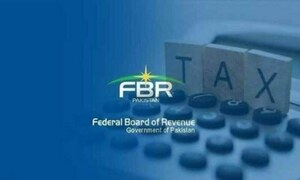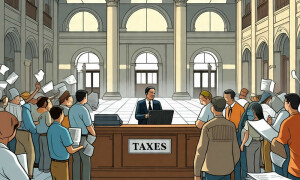ISLAMABAD: All Pakistan Textile Mills Association (APTMA) has sent its proposals for budget 2025-26 to Finance Minister, Senator Muhammad Aurangzeb and sought an appointment for a detailed discussion on them.
The budget proposals are as follows:
POWER (i) ensure 9 cents/kWh regionally competitive industrial power tariff; (ii) eliminate Rs 100 billion cross-subsidy to other sectors; (iii) abolish Time-of-Use (ToU) tariff regime and implement uniform tariff; and (iv) allow B2B power contracts by operationalizing CTBCM or otherwise.
APTMA urges govt to re-evaluate grid levy on industrial CPPs
GAS: (i) reclassify cogeneration users to industrial process gas tariff; (ii) correct calculation of Grid Transition Levy to reflect actual tariff and costs; (iii) allow B2B procurement of domestic gas under Third Party Access through transparent competitive bidding, and permit textile sector to import own LNG.
EXPORT FACILITATION SCHEME ANOMALY: (i) restoration of EFS to its June 2024 framework, with zero rating on local supplies, is the first-best solution. However, the IMF has not been agreeable despite being repeatedly approached by the government and industry and; (ii) in this scenario, implementation of a negative list of EFS imports, including yarns and fabric, is the only viable way forward.
CORPORATE INCOME TAX: eliminate dual advance taxation by removing the one percent advance tax on export proceeds, ensuring exporters are taxed only under the normal, predictable regime.
SALES TAX REGIME: consider implementing a graduated sales tax regime (similar to Indian model), where inputs along the value chain are taxed at lower rates than final goods to enhance compliance, reduce tax evasion, and improve manufacturing competitiveness.
OUTSTANDING REFUNDS AND DUES: (i) despite assurances, textile exporters face significant financial strain due to delayed refunds across key categories causing a massive liquidity crunch across the industry; (ii) immediately clear all outstanding dues of industry.
INCENTIVES FOR INVESTMENT AND EXPORT: (i) the government must introduce targeted incentive programs such as DLTL, export rebate schemes, and tax relief measures for high-value textile and apparel exports;(ii) provide tax credits for fresh investment in export-oriented textile manufacturing ;(iii) targeted incentives for export of new products and in new markets; (iv) operationalize financing schemes (TERF/LTFF) under EXIM Bank.
GREENING OF INDUSTRIES: (i) provide concessional financing and tax incentives for energy efficient upgrades, solar integration, and wastewater treatment in existing industrial units; (ii) mandate and support green building standards for all new export-oriented factories, including central utilities in industrial parks (ETPs, solar-ready roofs, etc), Set up Green Compliance Facilitation Centres to assist firms with audits, certifications (LEED, EDGE), and buyer linkages focused on sustainable sourcing.
OTHER EXPORT FACILITATION MEASURES: (i) reduce customs duty on purified terephthalic acid to zero percent for cascading reduction in duties on PSF; (ii) develop industrial zones for 1,000 garment plants with plug and play facilities, with targeted incentives for joint ventures with Chinese and other foreign investors; (iii) establish free commercial zones near seaports and airports to lower costs and ease logistical barriers; (iv) traceability must be made mandatory by law, especially at the farming and ginning stages to ensure full compliance; (v) testing and certification are major challenges for textile and apparel exporters in Pakistan due to limited local facilities and high costs of sending goods abroad.
Copyright Business Recorder, 2025






















Comments
Comments are closed.